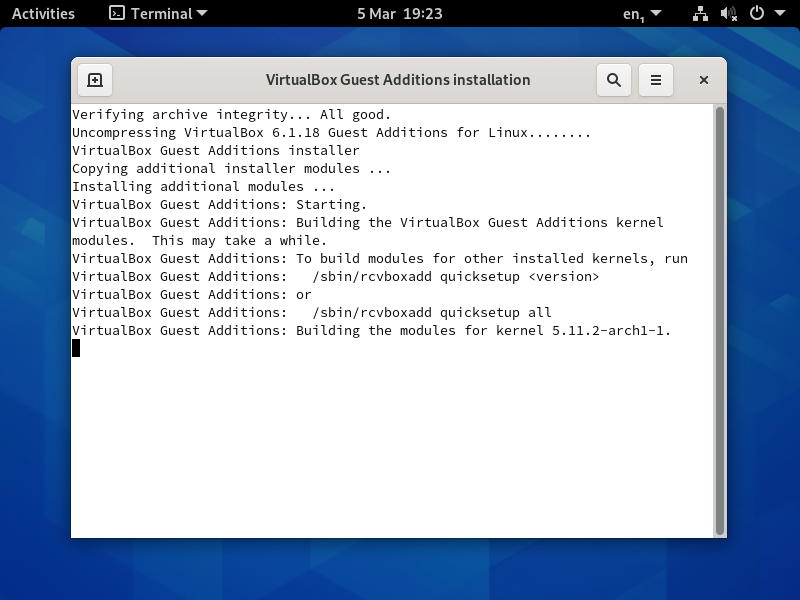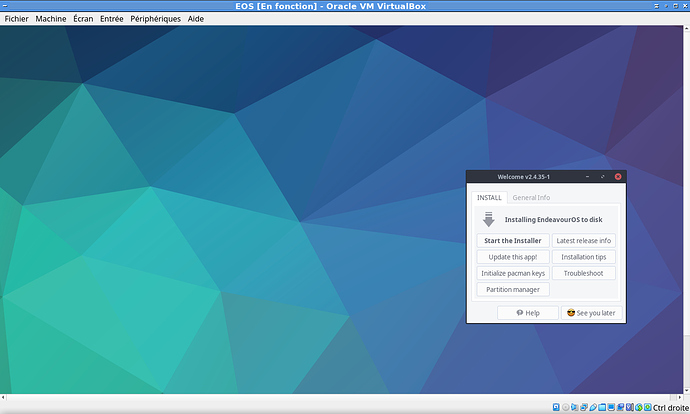

- Arch virtualbox resize display install#
- Arch virtualbox resize display password#
- Arch virtualbox resize display download#
- Arch virtualbox resize display windows#
First we’ll have to install Vim using pacman -S vim. I would also recommend adding the user you created above to the SUDOers list by using the visudo command to open sudo’s configuration file.

(parted) mkpart primary ext4 1024MiB 100% (parted) mkpart primary linux-swap 210MiB 1177MiB

The following set of parted commands will create the desired partitions (200MB as /boot for installing GRUB, 1024MB swap file and the rest allocated as a single root ~ # parted /dev/sda.Sector size (logical/physical): 512B/512B We can find out a bit more about “sda” using parted /dev/sda ~ # parted /dev/sda print In the example above, “sda” is the VM’s hard drive image.Loop0 7:0 0 278.2M 1 loop /run/archiso/sfs/airootfs Sr0 11:0 1 637M 0 rom /run/archiso/bootmnt Let’s use the lsblk command to take a look at all the available storage ~ # lsblk.I’ve chosen a mixture of the 2 partitioning schemes: 200MB as /boot for installing GRUB, 1024MB swap file and the rest allocated as a single root partition. You can partition the hard drive using either a single root partition or discrete partitions.
Arch virtualbox resize display password#
Now that the VM has been created with the ISO already inserted, start the virtual machine and login with user ID and password “root”.
Arch virtualbox resize display windows#
In case you would like any folders from your host machine to be accessible in your VM, the simplest way is to add them to the “Machine Folders” section under “Shared Folders” but do not select the “Auto-mount” option otherwise they will only be accessible as root ( I’ve since moved to using sshfs for mounting my Windows host machine folders). Network settings are important: at a minimum, you need to bridge your host machine’s network interface (which is connected to the internet) with your VM as shown in the following image: Arch Linux can run on a pretty low memory configuration so you can set the size of the display and base memories according to your preference.įor storage, I configured a “dynamically allocated” 8.0 GB hard drive image since I wanted to upload the resulting VMs to Dropbox, but I would recommend using a “fixed size” hard drive if you have space to spare on your host machine. Once the VM is created, add the Arch Linux ISO to the CD/DVD drive.Ĭonfiguration of the highlighted settings in the screenshot below are important and the rest are optional. Virtual Machine ConfigurationĬreate a new virtual machine in VirtualBox for Arch Linux (sample configuration shown below). Most of the information below can be found in the official installation guide but some other information requires some Googling and a little bit of digging around on the Arch Linux wiki and forums.
Arch virtualbox resize display download#
If you’d rather just download a pre-configured Arch Linux VM, go here. Arch Linux has to be installed manually since the official Arch Linux ISO doesn’t contain an installer, additionally, no packages are included in the ISO, so a working internet connection is required during installation.


 0 kommentar(er)
0 kommentar(er)
